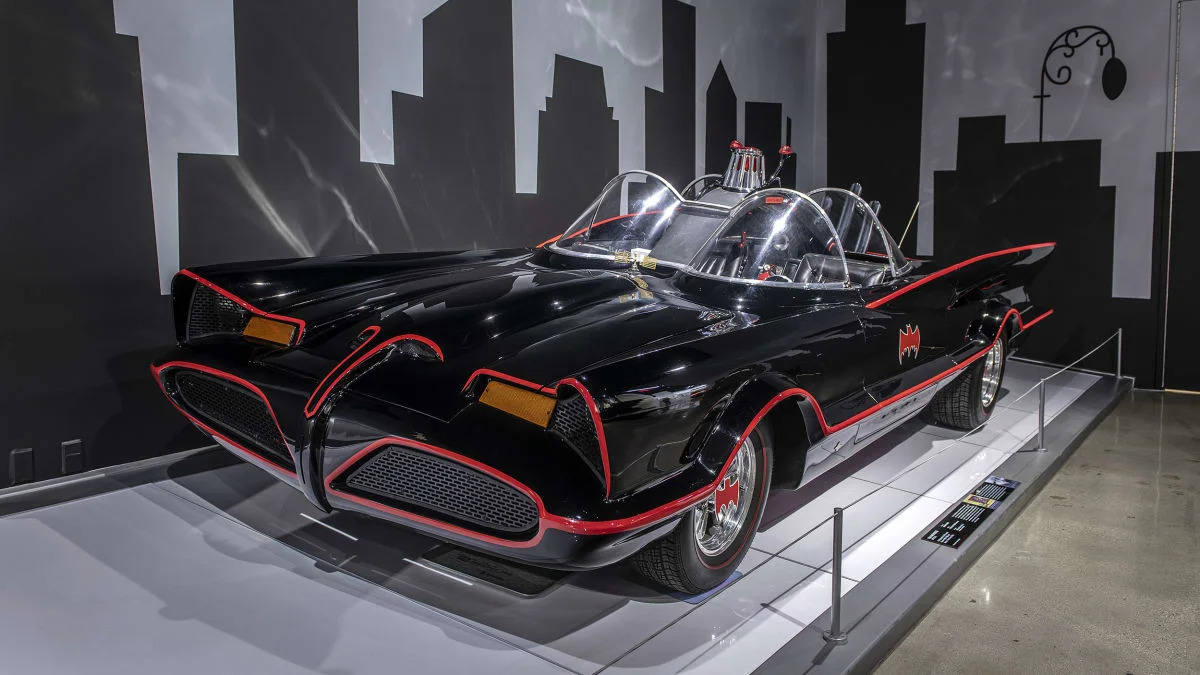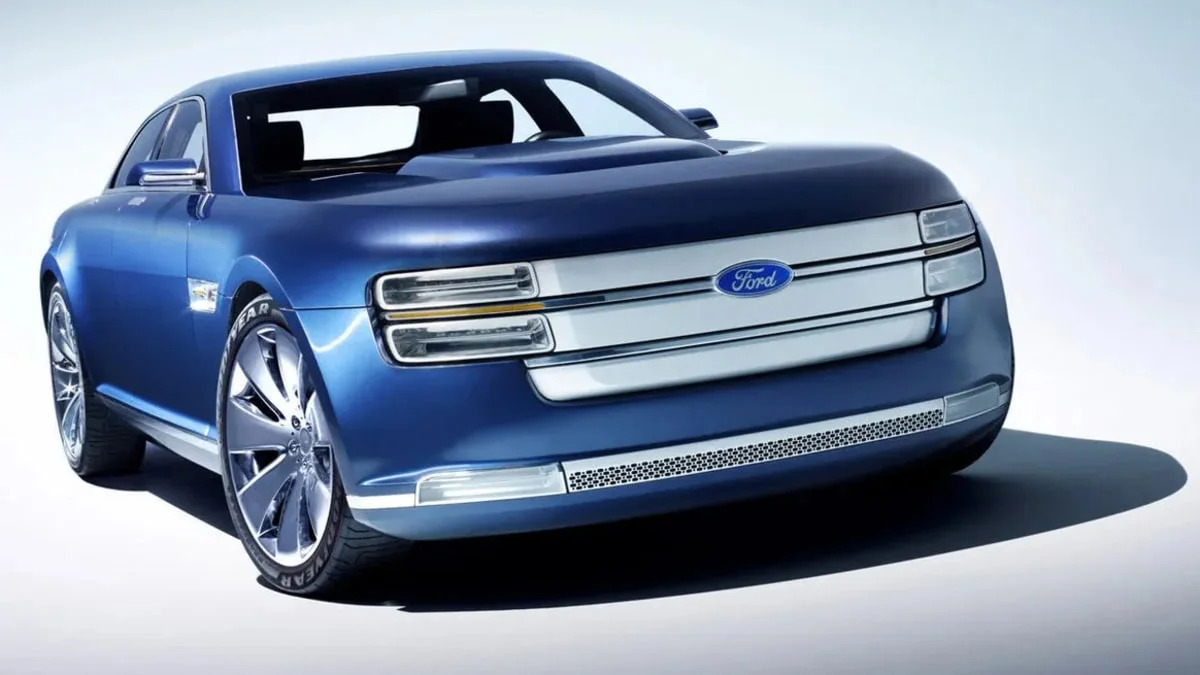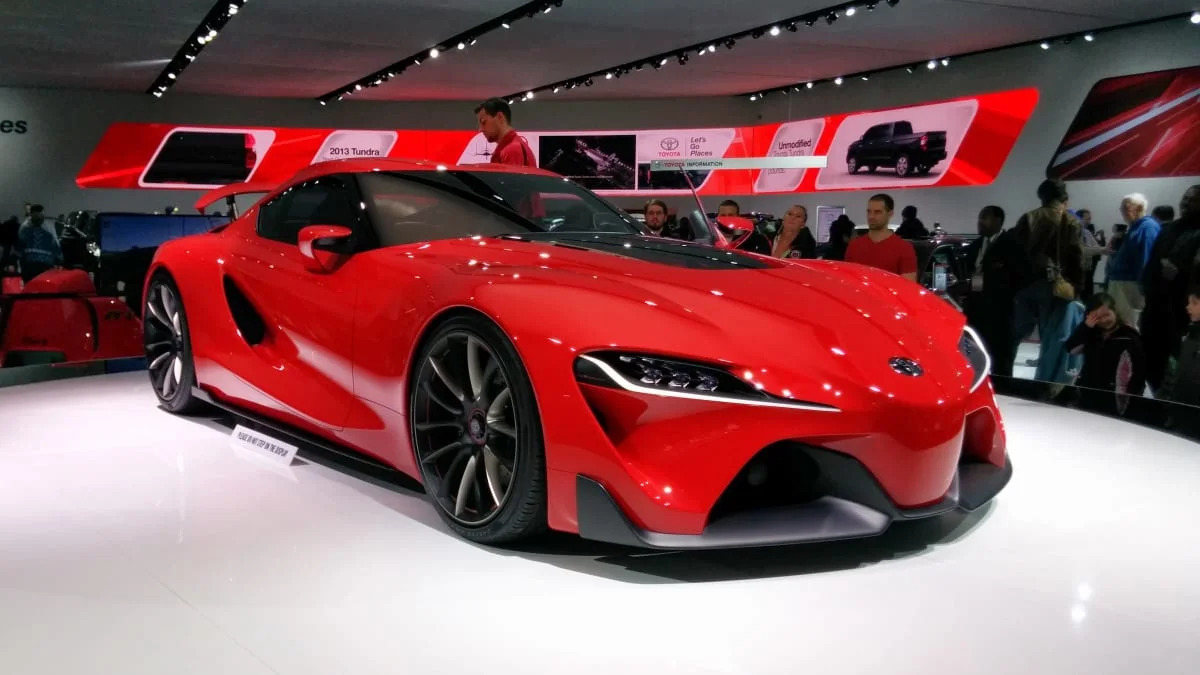The Detroit Auto Show is underway, and anytime we return to Cobo Hall Huntington Place — or any other show venue — memories of concept cars come flooding back. With that in mind, let’s pretend we’re rich and important enough to afford whatever we want.
In this case, the budget is a cool billion dollars, because, why not? Let’s also say that amount buys you the opportunity to purchase any concept car from history. The current owner doesn’t want to sell? A phone call will take care of that.
So there you go. Just a few rules:
- You must purchase a concept car.
- You’ve can’t spend more than $1 billion.
- If your favorite concept car was lost in a fire or something, you can restore it by commissioning an exact replica within the budget.
With that in mind, here’s what the Autoblog staff is buying …
Cadillac Sixteen (2003)
Senior Editor John Beltz Snyder: I was tempted to choose the Olds Golden Rocket you see above, but I went with something I’ve actually seen in person. I attended the Detroit Auto Show for the first time in 2003, the year Cadillac unveiled its Sixteen concept. Inspired by the Cadillac V-16 of old (and, therefore, part of the spiritual lineage of the new electric Celestiq flagship), it featured, you guessed it, 16 cylinders under that exceptionally lengthy side-opening hood. Displacing 13.6 liters, that engine put some 1,000 horsepower and 1,000 pound-feet of torque to the rear wheels via a four-speed automatic. I loved it so much not just because it was incredibly striking in person, but that it did such a great job of blending heritage with then-futuristic design, which is something I always appreciate if pulled off well. It’s such an intriguing example of Lutz-era GM mayhem. I’m lucky to have found a Hot Wheels version of the Sixteen for my son, and now that I’ve got a billion dollars, I can buy the real thing.

Lincoln Futura Concept (1955)
Senior Editor James Riswick: Is this answer really in the spirit of the exercise? I don’t know, but the rather recognizable car you see above started life as the Lincoln Futura Concept that made its public debut at the 1955 Chicago Auto Show. According to the car’s Wikipedia page, it was built by Ghia in Torino, Italy, at a cost of $250,000 or $2.7 million in today’s funny money. It would eventually be painted red and featured in a Debbie Reynolds movie. It’s a pretty sweet car and you can definitely see the elements that carried over to its next iteration: the Batmobile from the 1966 “Batman” TV show. Its creation undertaken by George Barris, who reportedly purchased the car from GM for $1. Talk about catastrophic depreciation … and then astronomical appreciation! He had owned the car for several years before figuring it would be a good basis for the Batmobile, which needed to be completed quicker than originally planned. Barris actually maintained ownership of the car, leasing it to the TV show, until auctioning it in 2013 for $4.2 million. I’m guessing it would be worth just a weeeee bit more today. Per the rules, would I restore it to its original form? Um, no.

Chrysler ME Four-Twelve (2004)
Associate Editor Byron Hurd: Chrysler design was going places in the early aughts; too bad the rest of the company couldn’t keep up. The ME Four-Twelve is one of those concepts whose name was derived very practically: Mid-Engine, Four Turbochargers and Twelve Cylinders. Simplicity itself. But you have to remember, these were the heady days of the “Merger of Equals.” Under this Chrysler-designed exterior and alphanumeric nomenclature, those four turbos were feeding a 6.0-liter aluminum Mercedes-Benz V12 and the whole works was bolted to a seven-speed DCT. Total power? 850 horses. Top Speed? 248. Chryslers actually built that can do these things? Zero. It was perhaps too bold, even with the benefit of hindsight. Daimler-Chrysler’s badass designers also brought us the Viper-derived Firepower prototype, but that’s a concept (and in my case, a fetish) for another day.

Ford Interceptor Concept (2007)
Editor-in-Chief Greg Migliore: The Interceptor concept resonated with me at a time when rear-wheel-drive muscle cars were beginning to come back, and it looked like Ford might join the party. The Interceptor was a RWD concept with a 5.0-liter V8, all wrapped in brash styling that included a huge grille, chrome wheels and classic muscle car proportions. It reminded me of the Galaxies from 40 years before. The car world loved it, but alas, it wasn’t to be. Chevy, Cadillac, and Dodge all followed through with their rear-wheel drive plans, but the Interceptor remained in dry dock.
Mazda Furai Concept (2008)
News Editor Joel Stocksdale: This one is pretty important to me for a variety of reasons. I’ve been a fan of Mazda for a long time, particularly in high school, having recently obtained a Mazda Miata as my first car. And I was so blown away by the news coming out about the rotary-powered, ethanol-fueled futuristic race car (much of it I read on this very site) that was going to be shown at the Detroit Auto Show. It was even a real car, built on an actual Mazda prototype race car chassis with a running engine. And the fact that this amazing car was going to actually be shown in striking distance of my central Indiana hometown, I finally had the clincher to convince my dad to go with me on a weekend trip to the Detroit show. Because, while I enjoyed going to the Indianapolis regional show every year, I really wanted to get my first taste of the glitz and glamor of a real international auto show. Sure enough, I got my dad on board, and we braved a frigid January weekend to go. The show was everything I hoped for, and I spent a good amount of time just soaking up the Furai’s flowing curves.
Of course, the Furai met a tragic end, bursting into flames in the hands of Top Gear. So really I’d be spending this hypothetical billion to have the car completely re-created. But it would be worth it to me. Plus, it would be an amazing concept that could be driven, and driven hard. And combined with the sentimental value, it’s a no-brainer.

Toyota FT-1 Concept (2014)
Road Test Editor Zac Palmer: This concept shocked me when it first dropped. Toyota had never really been on my radar growing up for a lack of new sports cars and enthusiast offerings, but this FT-1 changed everything. It set Toyota on a path to produce the Supra that was deeply inspired by the visionary FT-1. To see it here at the Detroit Auto Show (yes, that grainy smartphone photo is mine from the 2014 Detroit Show public days) in gleaming red paint really changed my mind on what Toyota could be as an automaker if it set its mind to a specific goal. What’s come after the FT-1 has been nothing short of awesome, as we have a whole array of GR performance models to choose from. The beautiful but also outwardly sporty looks of this concept drew me in like no other concept did before, and I would put it in my garage without hesitation. It’s one of the reasons I love the Supra so much, because the kid in me can see the FT-1 hiding inside it.
Alfa Romeo B.A.T. trio
Senior Editor Jeremy Korzeniewski: I’m going with a trio of cars, because … well, I can. This is an exercise of the ether of the internet, after all. And, if you want to be picky about it, all three of them sold for $14.8 million back in 2020, and even as bad as inflation has been, I’m pretty sure a billion bucks will put them in my underground lair. If you’re not familiar with the B.A.T. trio, here’s the super short version: They were built in 1953, 1954 and 1955 primarily as an exercise in aerodynamics. Suffice it to say the exercise was a wild success. These cars don’t just look like they’d cheat the wind, they do, with a coefficient of drag as low as .19 in an era where computer-aided design did not exist. And not only were the design goals achieved, the result is simply incredible. I don’t know if they are classically beautiful, if they were futuristic or if they are now just retro. They amaze me and are therefore my choice for this week’s game.
Read the full article here


